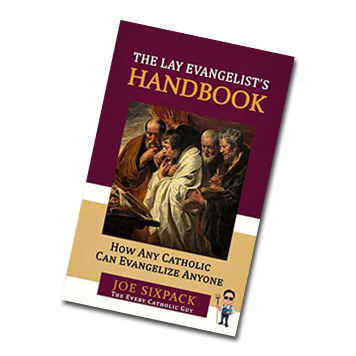Crushed But Unbroken . . . The Martyrdom Of St. Margaret Clitherow
By RAY CAVANAUGH
The late-1500s were a tough time for Catholics in England, where the Reformation was in full gear. A 1581 law prohibited Catholic religious ceremonies. And a 1584 Act of Parliament mandated that all Catholic priests leave the country or else face execution. Some chose to remain, however, so they could continue serving the faithful.
Also taking huge risks were the laypersons who sheltered these priests. For providing such shelter, Margaret Clitherow met with a horrifying punishment. March 26 is her feast day.
Margaret Clitherow née Middleton was born to Protestant parents in York, England, in 1556. Her father, Thomas Middleton, was the Sheriff of York.
At age 15 or 16, she married John Clitherow, a widower twice her age and the proprietor of a successful butchery. She assisted him in running the business.
In 1574, she converted to Catholicism. The website historyofyork.org.uk says that Clitherow “appears to have been converted to Catholicism by the wife of prominent York Catholic, Dr. Thomas Vavasour.”
Clitherow’s Catholic faith would seem to place quite a burden on her marriage, as her husband had no such intention of leaving the Anglican Church. But despite remaining Protestant, he was also sympathetic to his wife’s beliefs, according to the BBC media outlet.
Her refusal to attend Anglican church services saw her repeatedly fined and designated a “recusant.” Eventually, she began serving prison sentences inside York Castle. Seeking to make use of her time, she learned to read — an ability which many people of that era, especially women, never had the chance to cultivate. She also witnessed Catholic priests led to the prison’s gallows.
Upon obtaining her freedom, Clitherow undertook to create a secret room in her home, and there she began harboring Catholic priests (some of whom would themselves ultimately meet with martyrdom).
Skipping out on Anglican Mass could be problematic, but sheltering Catholic priests was on a whole different level. It was regarded as an act of treason, and risked an agonizing death.
This activity was especially dangerous for Clitherow, who, as a repeatedly incarcerated unrepentant Catholic, was already fixed on the radar of authorities. Additionally, her region of Yorkshire was a hotbed of English Catholic resistance, and so the area received extra scrutiny.
What’s more, Clitherow not only sheltered priests but also facilitated Catholic Mass (directly above her husband’s butchery) and even ran a secret school providing Catholic religious instruction to children.
During a March 1586 raid on Clitherow’s home, a foreign boy lodging with the family was intimidated into divulging the location of the secret priest room.
The one priest occupant at the time of the raid managed to escape. Clitherow, though, was in serious trouble: Upon locating the secret room, the authorities found priestly vestments and Communion wafers.
Appearing at court, Clitherow — saying that only God could judge her — refused to enter a plea of guilt or innocence.
Seeking to get her to change her mind and enter a plea, the court officials emphasized how gruesome the consequences were for such noncompliance.
But she would not comply. Aside from the reason she stated, there was also a more practical reason for Clitherow’s refusal to plead. By taking this route, she was sealing her own fate. But she was also protecting family members — most notably her husband — from facing any penalties.
On Good Friday, March 25, 1586, Clitherow, then age 30, was taken barefoot to a local bridge. There, next to a toll booth, she was stripped naked and forced to lie down with a stone beneath her back. An unhinged door was then placed upon her and (gradually) piled with rocks.
Clitherow endured this torment for about 15 minutes before the rocks crushed her to death. Her body was reportedly left in its ghastly predicament for several hours before being removed and buried alongside a dunghill. The authorities were concerned that a conventional burial at a cemetery might attract pilgrims and encourage Catholic worship.
No one could effectively suppress the story of her martyrdom, however. Ensuing centuries saw significant biographical work published about Clitherow, including Life and Death of Margaret Clitherow, the Martyr of York and the anthology Troubles of our Catholic Forefathers, which devotes a section to her. Also, the legendary poet Gerard Manley Hopkins — himself an Anglican-born convert to Catholicism — wrote a poem (never completed) about Clitherow that was discovered after his death.
Clitherow received beatification in 1929 and canonization in 1970.
In 2008, some 422 years after her execution, the BBC reported that a plaque dedicated to Clitherow had been erected in her hometown of York, near the site of her martyrdom. York also has a shrine dedicated to her that is free and open to the public.
Some sources report that Clitherow was pregnant at the time of her martyrdom (this aspect, however, remains uncertain). Of the three children who survived her, two of them became priests, and the third became a nun.










